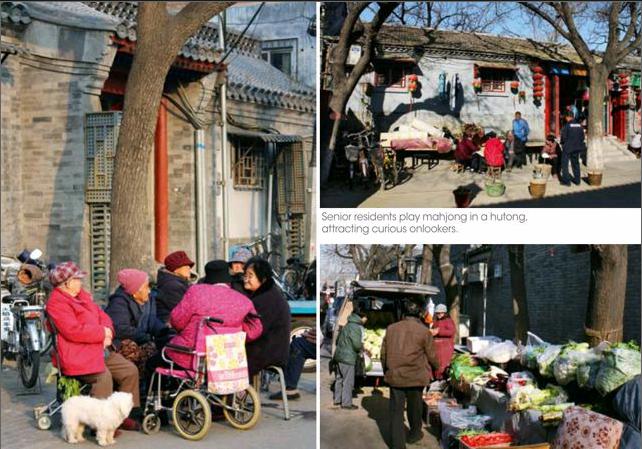Explore Real Beijing Culture in the Hutongs
by+Alexandra+Etienne

The hutongs are an intrinsic part of Beijings identity. In fact, these narrow streets or alleys make up the citys DNA as they reflect a typically northern way of living. Most prominently, the hutongs that dot the urban landscape of Beijing offer us a glimpse into its past.
I clearly remember the first time I went to one of them while I was an exchange student at Peking University last year. It was a clear day, and I had my camera in my bag to make the most of the blue skies for a little photographic journey. Little did I know that I would come across some real gems to take pictures. What was meant to be just a coffee break in Gulou followed by 798 art district turned into a full-day exploration around countless little alleys, getting lost, meeting locals and stumbling across very intriguing sights. I had to forgo the galleries, but luckily ended up enjoying the hutongs, taking it all in – the sounds of laughter, the stunning light at dusk, the shades of the trees…
In retrospect, I feel that visiting a few hutongs was not enough, which is partly why I decided to stay on in China and even move into one of them. As a laowai(or ‘foreigner) resident next to Zhangzizhonglu street, the neighbourhoods lively atmosphere has been a highly memorable experience, with great local eateries – not least the places selling those delicious sesame bread treats known as shaobing– and ideal for a couple of snapshots just around the corner!
But now, let us have a closer look at the etymology of the word: ‘hutong comes from the ancient Mongolian term ‘hottogmeaning ‘well because back then in the Yuan Dynasty (1271-1368) the locals lived close to a spring. Originally the hutongs were closely tied to a social hierarchy and feudal system which, needless to say, have disappeared today. Still, the basic structure of the hutongs has been kept – lines of siheyuan, courtyard dwellings shaped around a square. The architecture is a visual curiosity and certainly appealing to art fans and urbanites alike.
Above all, every hutong has its anecdotes and it is delightful to note how some of them are associated with historic events. Unlike other famous monuments such as Temple of Heaven, the Forbidden City or the Summer Palace, the hutongs are special examples of grassroots Beijingers culture.
Wandering around them is like following a path down Beijings memory lane. It is a fabulous way to get fully immersed in Beijings traditions that are still alive today, especially among the older generation. Near where I live for instance: in the evenings as I walk home from Dongsi station I love to see old ladies doing synchronised dancing, or the old men still at the same spot, playing mahjong with a small crowd of curious onlookers. Actually, if you go that extra mile further into those hutongs that are off the beaten track and not necessarily on a tourists map, thats where you can discover what once was and still lives on.
The hutongs are real treasures, although at times a bit hard to find as they may be hidden somewhere between high-rise buildings and a shopping mall. However, they are the true soul of Beijing, ensuring that this sprawling metropolis is one-of-a-kind. They are just around the corner, and deserve all of our attention and care.
I love the sense of community one gets in the hutongs, the way old friends and relatives stand outside their home for a chat or enjoy the sun while reading the paper. Unfortunately, the number of hutongs has considerably decreased in the last decades. Whenever I go to Sanlitun I cant help but think of what once was there. Having said that, the way past and present (even future!) collide in Beijing is precisely what makes the capital so fascinating. This fusion of modernity and tradition is more striking here than any other city I have been to in China (not least Shanghai). Beijings hutongs have captivated me ever since I first came to China as an exchange student at Peking University last year, and I am glad to still be here to write about them.
Needless to say, in such a quick-paced environment, the hutongs are a welcome opportunity for us to take a step back and pause about Beijings past. Wandering off in a hutong is like stepping into another world, a little cocoon of quiet thats just off a main road but feels far away from all the traffic and hustle and bustle of a huge city. In fact, the hutongs encapsulate the real spirit of Beijing. The least touristy ones conjure authentic and age-old aspects of northern Chinese life. It is hardly surprising that many people flock to visit them, either on a bicycle, motorbike, on foot, or even a rickshaw.
To conclude on a personal note, the more I have delved into Beijings hutong life, the more I have become fond of Beijing as a whole. The hutongs were perhaps an incentive for me to stay in Beijing for a couple months more, and no doubt they will keep drawing me back here. After all, the hutongs are the beating heart of Old Beijing!
China Pictorial2015年2期
